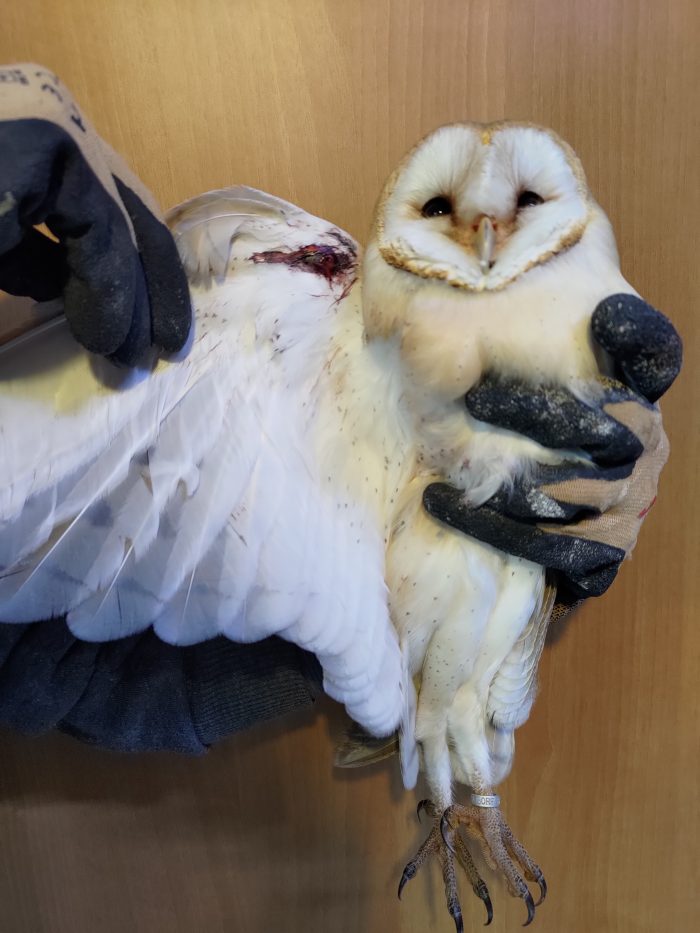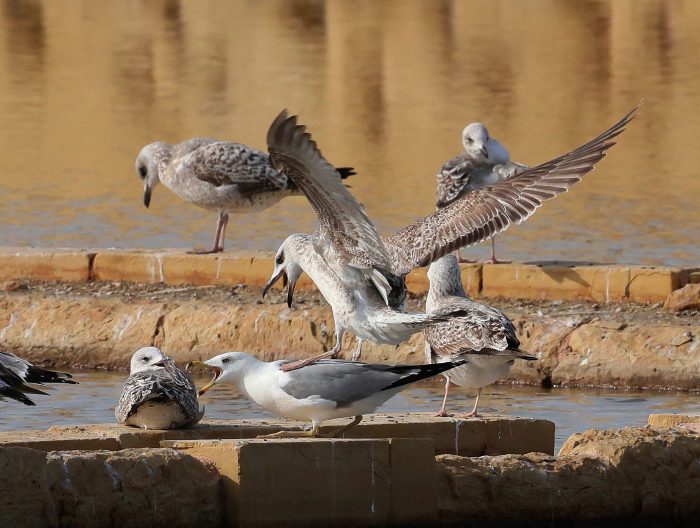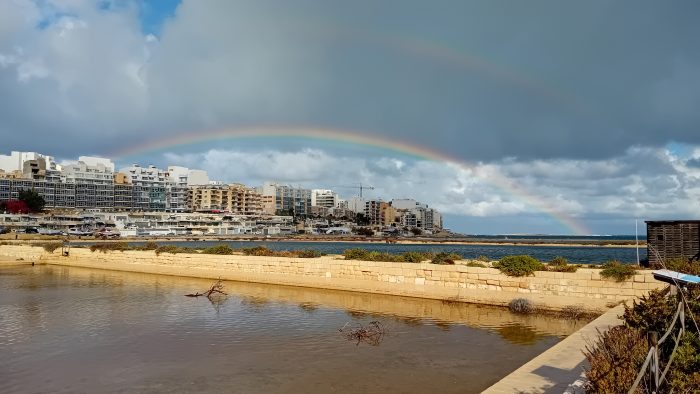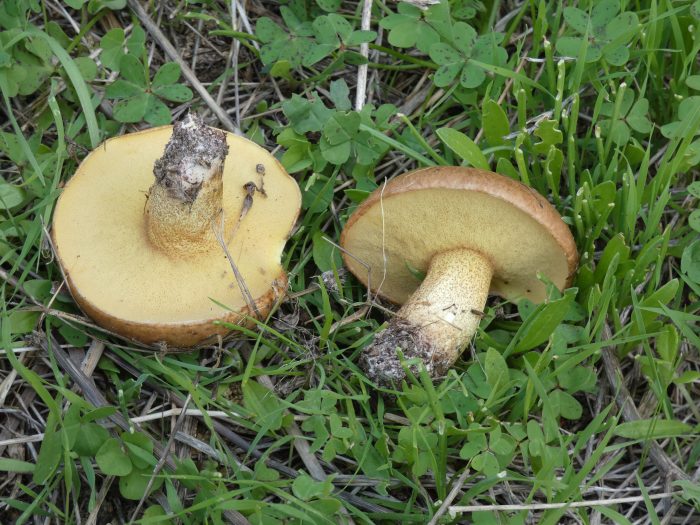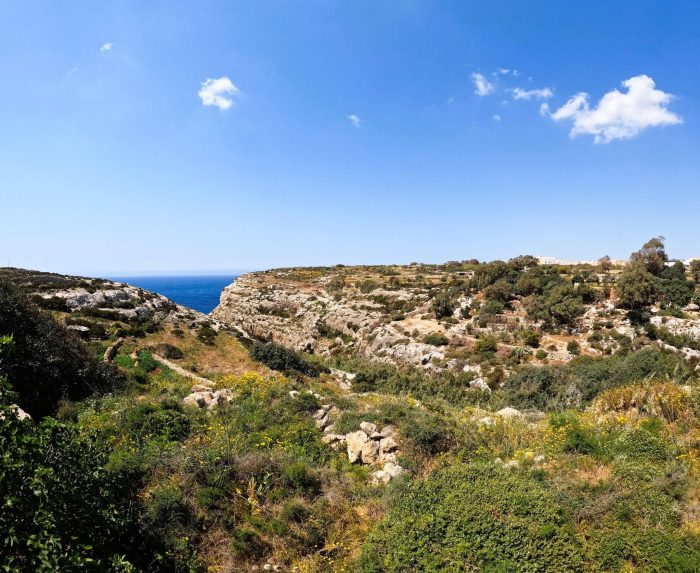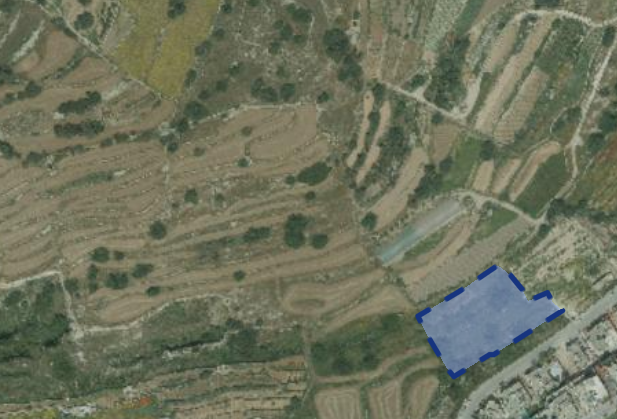On the frontlines is our monthly newsletter section covering the activities of BirdLife Malta’s conservation, policy and nature reserve (Salina, Simar, Għadira and Foresta 2000) teams, together with an update about rare and scarce bird species observed.

End of the trapping season!
December marked the end of the trapping derogations which included the controversial finch ‘research’ season (until 20 December) which has been widely abused by the trapping community to trap and keep finches across Malta and Gozo. Trapping of Song Thrush was permitted till 31 December, while according to the Wild Birds Regulation Unit (WBRU), trapped Golden Plover quotas were reached by 23 December.
This means that from 1 January 2024 any nets on the ground are completely illegal and therefore should be reported to us on Facebook messenger or by email. You can also refer the matter directly to the EPU (Environmental Protection Unit) of the Malta Police Force on 119. Please note that the hunting season is still open until 31 January.
Unattended nets risk killing wildlife and while these should have been covered during the times when these were not used during the season, they should by now have been completely dismantled. With the end of the trapping season, any nets seen on a trapping site are illegal.
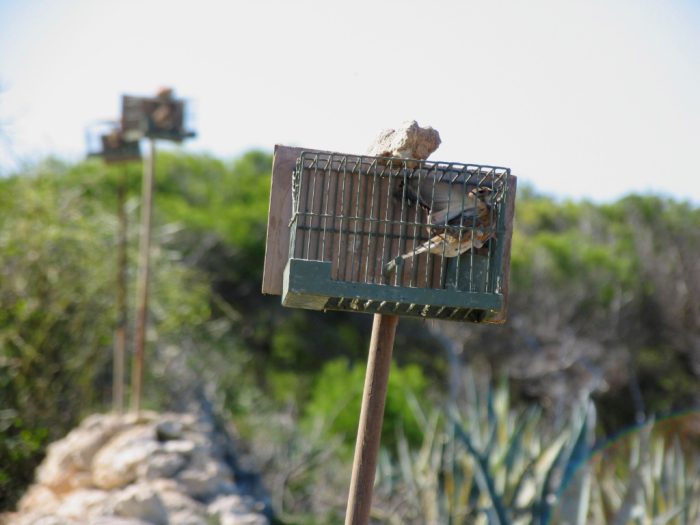
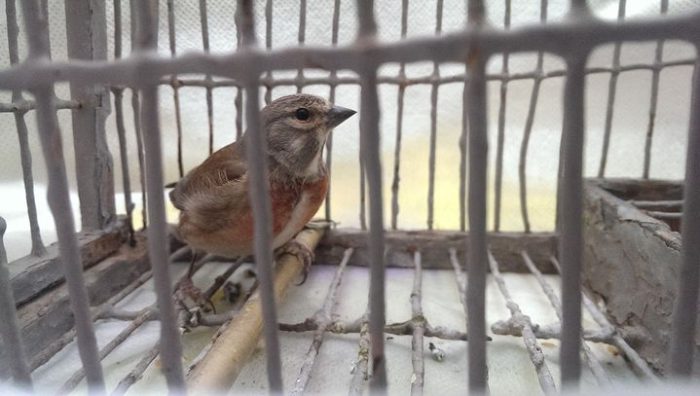
Not even an FKNK captive-bred Common Barn-owl is spared from illegal hunting
On 18 December, BirdLife Malta Conservation team collected what turned out to be an FKNK captive-bred Common Barn-owl (Barbaġann) that was found illegally shot in Ħaż-Żebbuġ. Not even this bird from the hunting lobby’s Common Barn-owl Reintroduction Project was spared from illegal hunting this autumn hunting season.
The injured bird – with an evident gunshot injury to its right wing was found by a member of the public and handed over to BirdLife Malta. Following an examination by the government vet, it was confirmed that the bird was suffering from a gunshot wound, leading to a broken right wing.
The bird has a ring on its left leg bearing the details “024-BORP”. The reading of the ring highlights the fact that it is from the Federation for Hunting and Conservation’s project, with the letters BORP standing for “Barn Owl Reintroduction Project”.
What makes this story even more ridiculous is that the shot captive-bred Barn-owl was later returned to the federation after following the necessary medical attention.
As clearly illustrated by this incident, illegal hunting remains rampant and indiscriminatory, with hunters targeting anything that flies, especially during open hunting seasons such as the ongoing season that runs until the end of January 2024.
Back into the wild!
The month of December has been busy with releases. On 5 December, with the help of our Italian collaborators LIPU (BirdLife Italy) and the environment authorities in Italy and Malta, we were able to transport and release a few extremely vulnerable (to hunting) species in Saline di Priolo Nature Reserve (Sicily).
BirdLife Malta released a Greater Flamingo (Fjamingu), a European Honey-buzzard (Kuċċarda) and a Western Marsh-harrier (Bagħdan Aħmar), which were all illegal hunting victims of the past autumn hunting season. Despite being protected throughout all Europe, poachers regularly target these birds. This, combined with the lack of enforcement, has led to the decision to move the birds to the closest country and release them there.
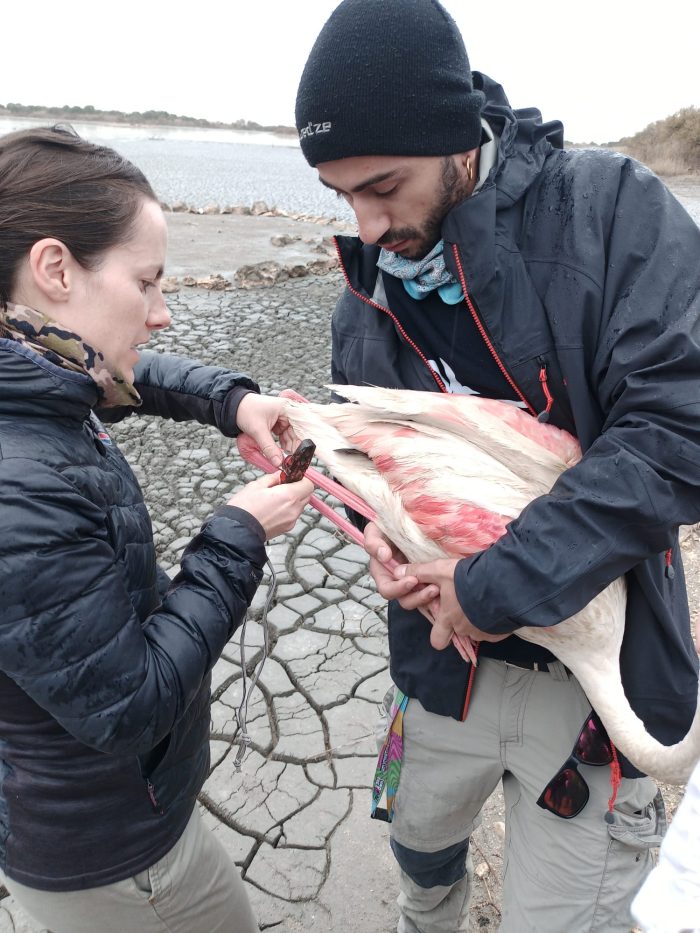
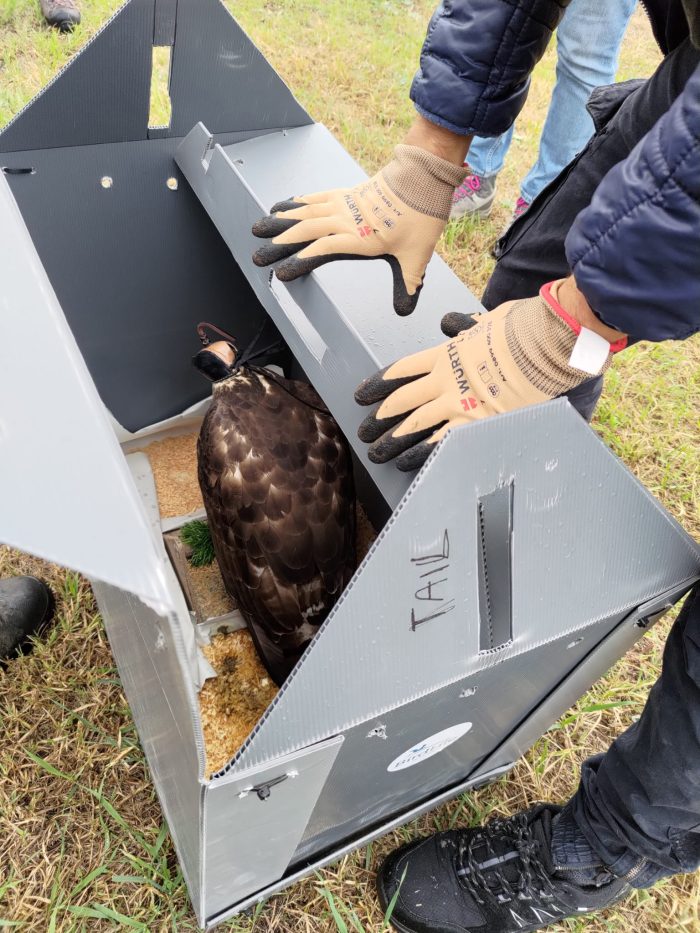

During the last weeks we also released seven gulls (Black-headed and Yellow-legged Gulls). Usually, wintertime results in individuals collected from the shore in an extremely weak state and recovering after the necessary medicinal treatment.
We also released a confiscated Hawfinch that was kept illegally and in cruel condition. The bird was malnourished and with a heavy mite infestation that caused severe skin problems. To avoid this bird being re-trapped, we postponed the release until 20 December when the finch trapping season comes to an end.
Additionally, a severely compromised European Robin (Pitirross) was seized by the authorities and released a few days later after we ensured it was sufficiently strong and nourished. The bird was used as an illegal decoy to lure other birds during the trapping season.
Watch the video below to see the Sicily releases.

Salina Nature Reserve
Sightings
In December, Salina Nature Reserve becomes a haven for gulls and waterbirds, marking a vibrant spectacle of avian life. Migratory waterbirds, including elegant herons, agile ducks, and graceful waders grace the wetlands, making them a temporary stopover during their winter journey. The reserve’s coastal proximity enhances the allure, attracting a variety of gull species that dot the skies and shorelines. Visit Salina to witness the impressive flights of seagulls and perhaps catch a glimpse of shearwaters and terns, adding to the avian diversity!
Salina’s carefully preserved habitats create a serene backdrop for birdwatching enthusiasts, offering a unique opportunity to observe these feathered visitors in their natural surroundings. December unfolds a fascinating chapter in the reserve’s avifauna narrative, inviting nature enthusiasts to experience the beauty of migratory gulls and waterbirds against Malta’s picturesque landscape.
A rainbow could be seen on 9 December in Salina!
Works
Visitors can now also enjoy the newly opened Dinja Waħda Garden that adds to the beauty of the reserve. The area – which just a few years ago was an empty strech of gravel – has a lovely footpath along the Sukkursu canal with benches to stop and observe the surroundings. Additionally, there is an educational area specifically designed with young children in mind. This is another garden in the Ġonna Dinja Waħda (Dinja Waħda Gardens) project through which BirdLife Malta improves biodiversity in schools and other public areas, and connects children with nature.

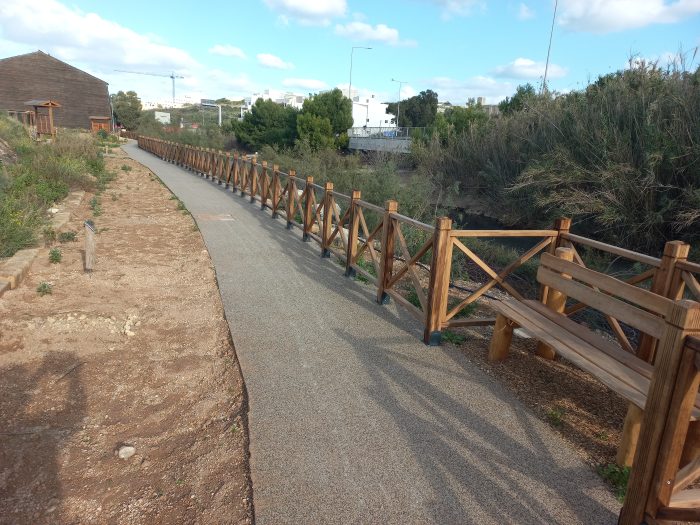
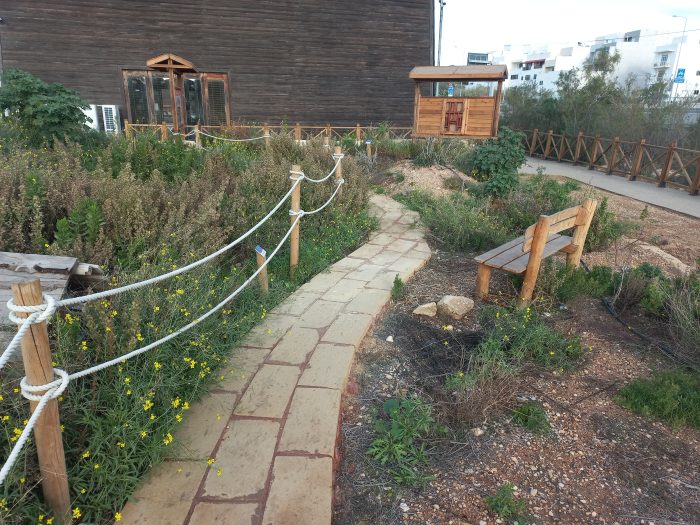
New panels, lovely footpath and freshly-planted flora at the new Dinja Waħda Garden at Salina!
And…more good news for Salina visitors! The newly-restored Salina wetland area is now open to the public! This is another restoration success story for BirdLife Malta that became possible thanks to the financial backing from DIMFE (Donors Initiative for Mediterranean Freshwater Ecosystems) and the site can be visited every Tuesday and Thursday from 11am to 5pm (with booking), accessible through the playground at Kennedy Grove. Check out this video BirdLife Malta have just published to discover more about this beautiful place!
Għadira Nature Reserve
Sightings
Although autumn migration was coming to an end, a variety of wintering birds were recorded throughout December at Għadira. Frequently recorded species included Little Grebe, Common Moorhens, Western Water Rails, Common Kingfishers, Song Thrushes, Common Starlings, European Robins, Common Stonechats, Common Chaffinches, Meadow Pipits, White Wagtails, Common Linnets and European Siskins amongst others. A few Little Egrets, Mediterranean and Black-headed Gulls stayed at the reserve for a couple of days during stormy weather. Common Kestrel was also noted occasionally, whereas Grey Heron and Eurasian Wryneck were seen on a couple of dates. Other important sightings included four Cattle Egrets and a Eurasian Woodcock on 2 December, a Moustached Warbler on 8 December, a Common Snipe and a Goldcrest, both on 10 December. A rare Eurasian Crag Martin was also seen on 10 December. A Common Teal and a Northern Shoveler stayed at the reserve on 19 and 20 December.
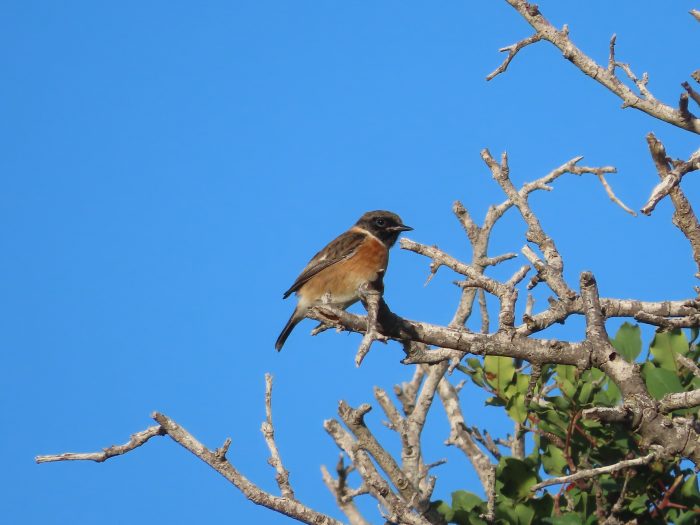
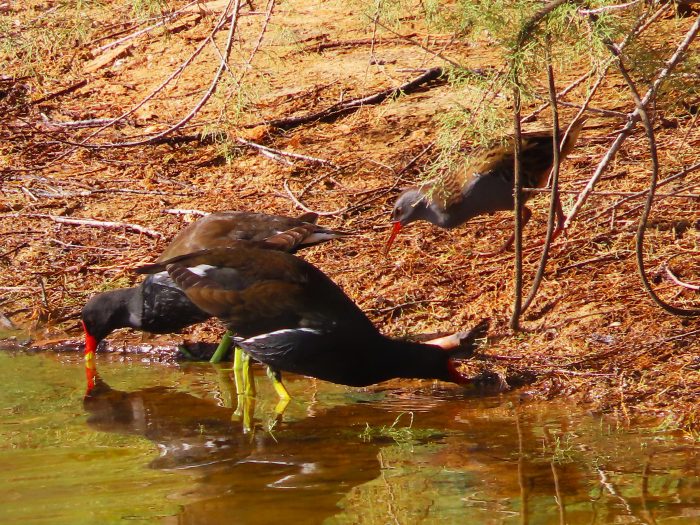
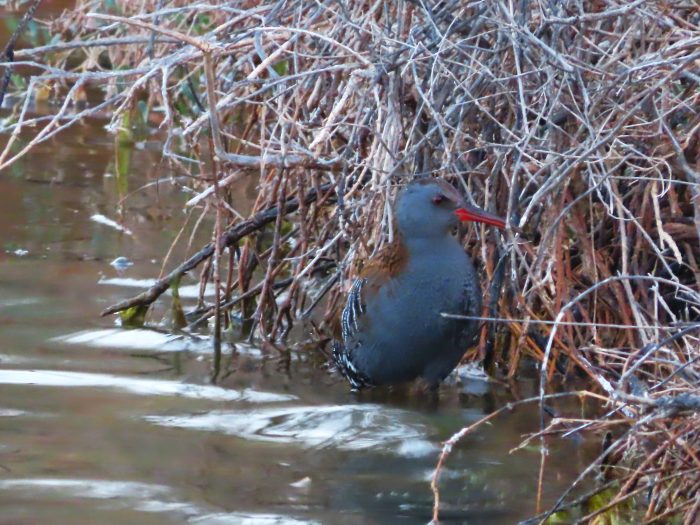


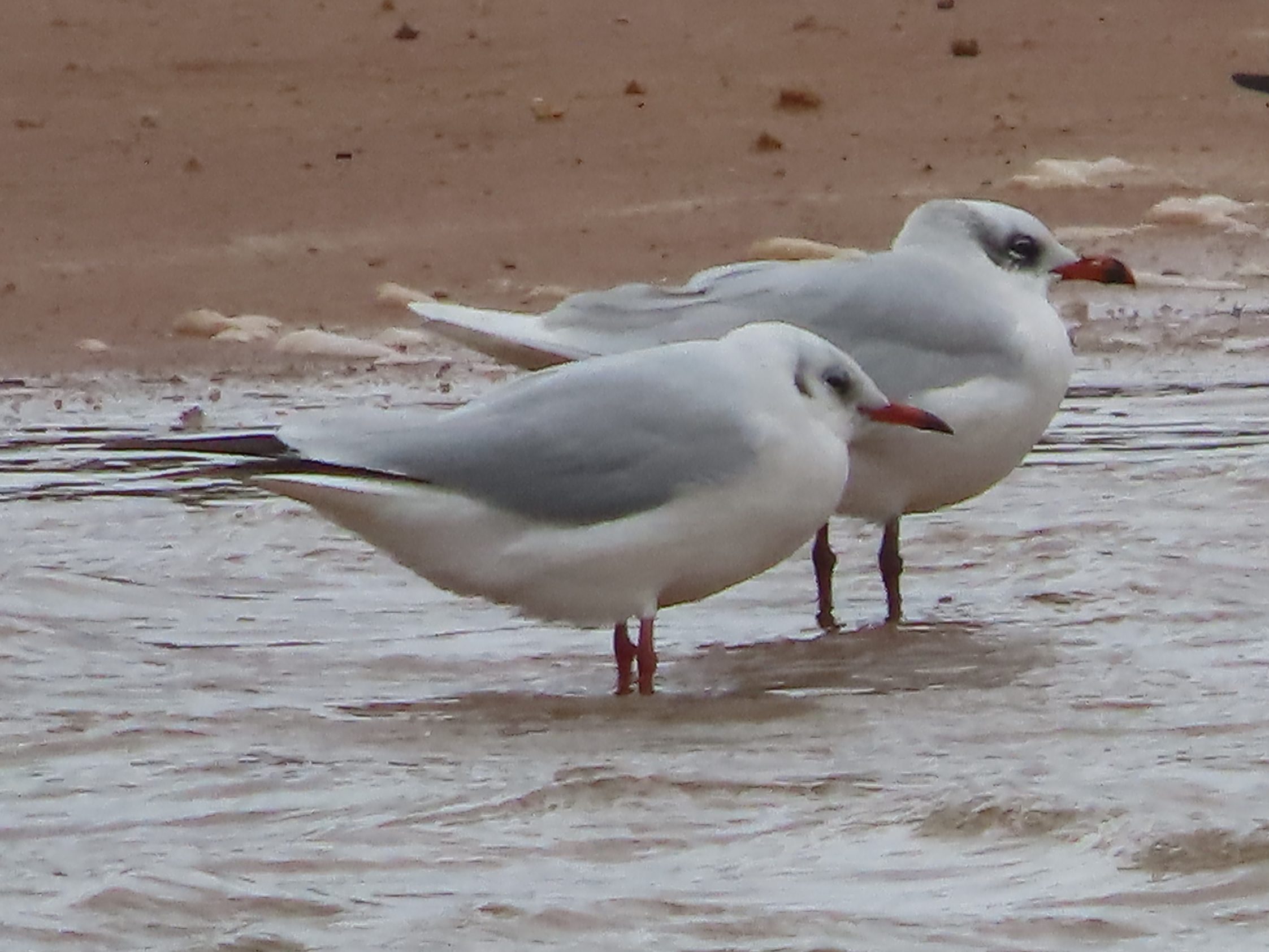
Works
A total of six ringing sessions were performed in December due to strong winds during most of the month. Amongst the few birds ringed were Common Chiffchaffs, Meadow Pipits, Eurasian Blackcaps and European Robins. Very few rainy days meant that irrigation and filling of ponds had to be done regularly for most of the month. Other works included fixing of hand rails, pruning/hedge trimming of Tamarix along the main path and inputting of data.
Simar Nature Reserve
Sightings
With the arrival of winter most of the wintering birds have now settled in the reserve. With abundant food available in both the wetland and the surrounding woodland, a variety of species have made Simar their home for the next few months.
The wetland is characterised by the presence of a good number of Common Coots. The maximum count has been of 15 which makes it one of the highest counts in recent years. A few adults are already showing territorial behaviour, indicating potential breeding in the next few months. A Northern Shoveler and a Gadwall, both females, have also settled for the wintering months. This is the first time that such species have wintered at Simar. A male Common Teal joined them during the last part of the month. Other species wintering in the wetland include two Little Grebes, one Black-necked Grebe, 1-2 Common Kingfishers, 4-5 Western Water Rails and 20-25 Common Moorhens.
A Grey Heron occasionally visited the reserve as well as up to 19 Little Egrets. Earlier in the month Western Marsh-harriers were observed hunting in the reserve on two occasions. A good number of Chiffchaffs and Blackcaps were also present, as well as Robins. Present in smaller numbers were Common Stonechats, Reed Buntings and Common Chaffinch.
A small number of Song Thrushes visit the woodland during the day. They mainly feed on fruit and berries still found in abundance in the reserve, mainly in Olive Trees and Lentisk. Other species also feed on these fruit, namely Sardinian Warblers, Blackcaps and Starlings.
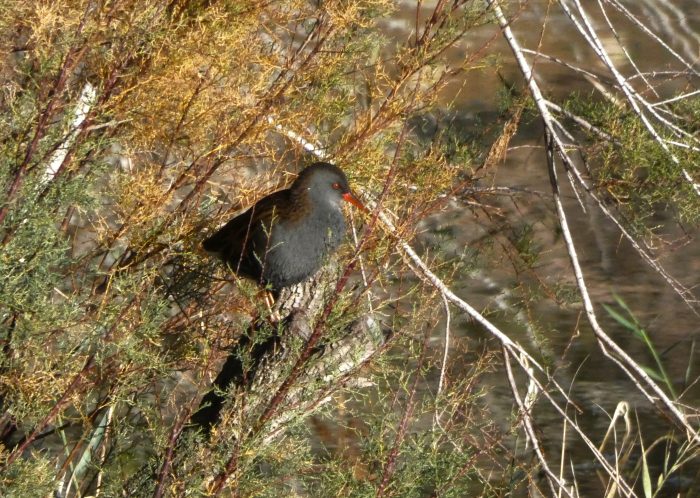
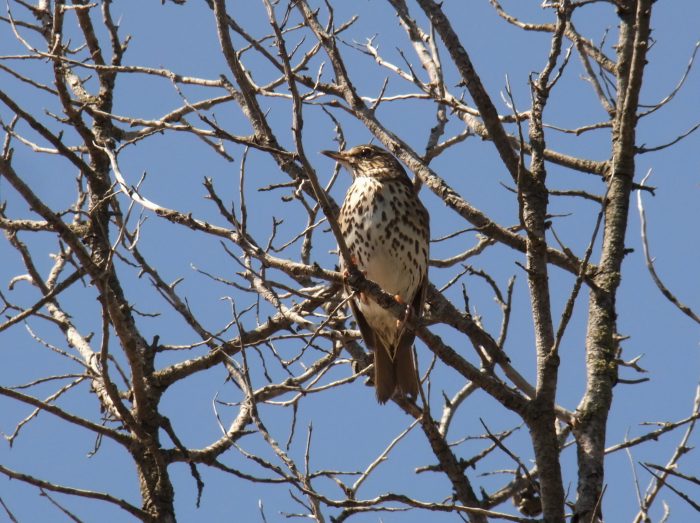

Foresta 2000
Sightings
December gifted Malta with some rains. Foresta 2000 plants were waiting for it for a long time, and now this place is becoming greener and greener. Together with warm temperatures, it created the right environment, not just for plants. One can see mushrooms as well. Creating a symbiosis with the Pine trees, plenty of Pine Boletus (Faqqiegħ taż-Żnuber in Maltese) could be found around the reserve. Even the Western Whip Snake was spotted basking in sunlight in the vegetation.
The usual winter residents like White Wagtails and European Robins are present in abundance. Eurasian Blackcaps, Black Redstarts, and Common Stonechats can be seen around the fields and Lentisk bushes. Resident birds such as Sardinian Warblers, Spanish Sparrows, Zitting Cisticolas and Eurasian Collared-dove are also enjoying Foresta 2000’s lush surroundings.
Birdwatching enthusiasts have been treated to rare and captivating sightings during their sessions, with the Dartford Warbler (Bufula tax-Xagħri in Maltese) and the graceful Eurasian Crag Martin (Ħawwiefa tal-Blat) making cameo appearances, adding an element of excitement and rarity to the experience.

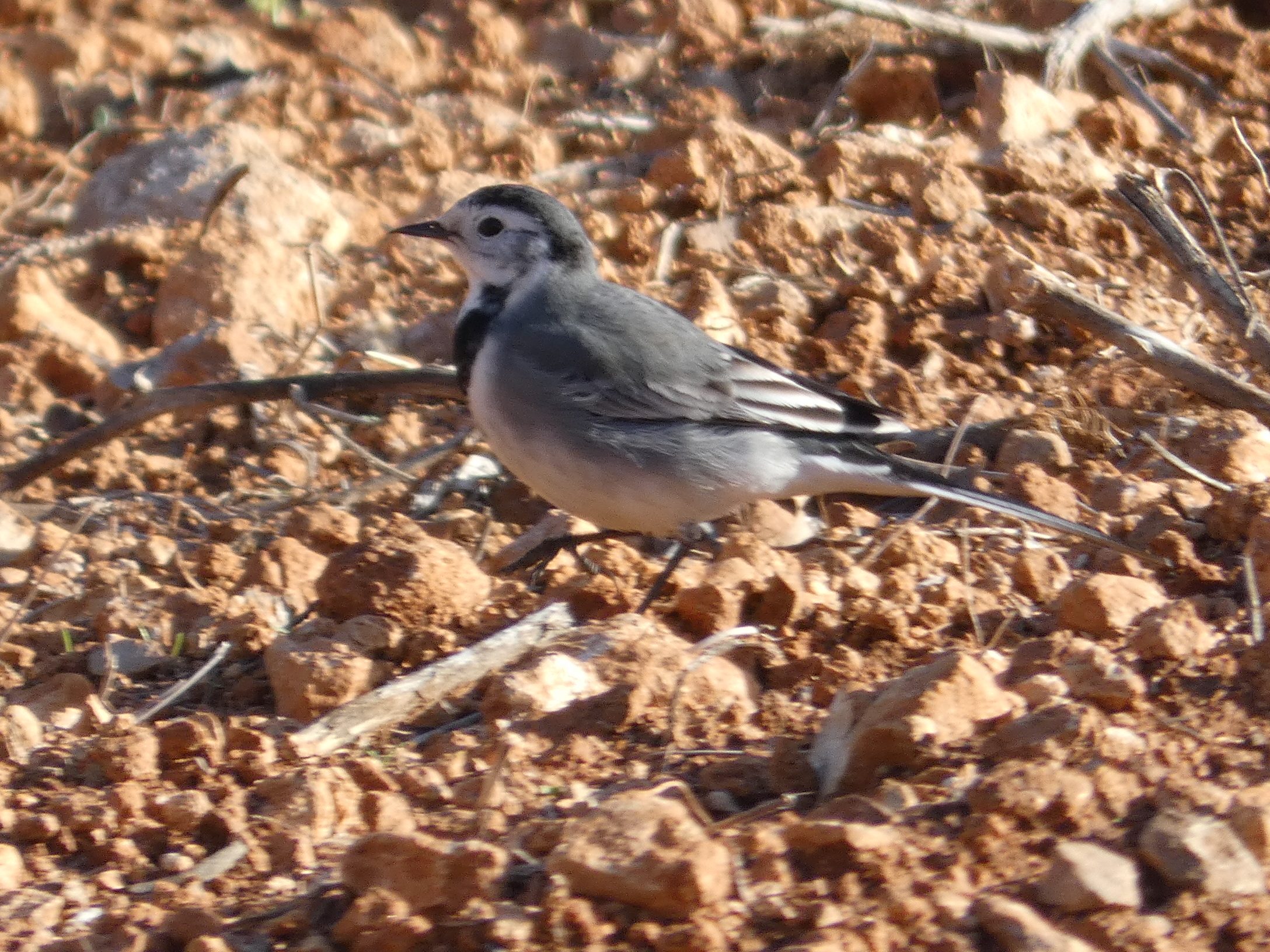

Works
Weekly clean-ups were done. Maintenance of benches in the picnic area has been carried out. A thorough check-up of the main gate has been conducted to guarantee seamless entry. An informative panel has been installed on the path leading to Foresta 200 and the Red Tower, offering visitors intriguing insights into the rich history and biodiversity of Foresta 2000.
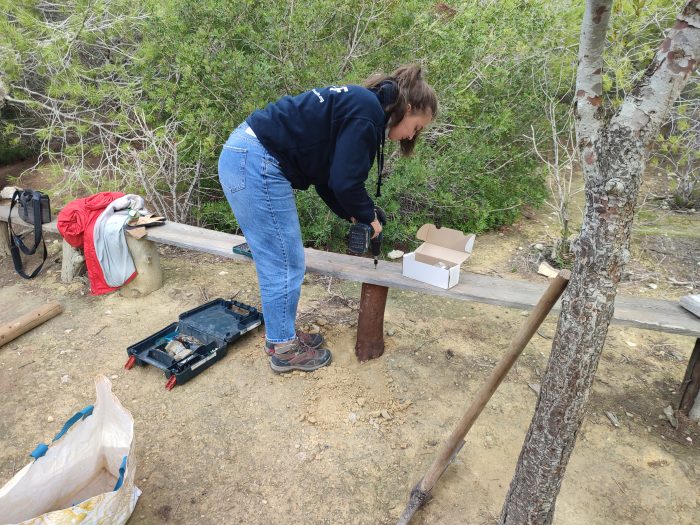
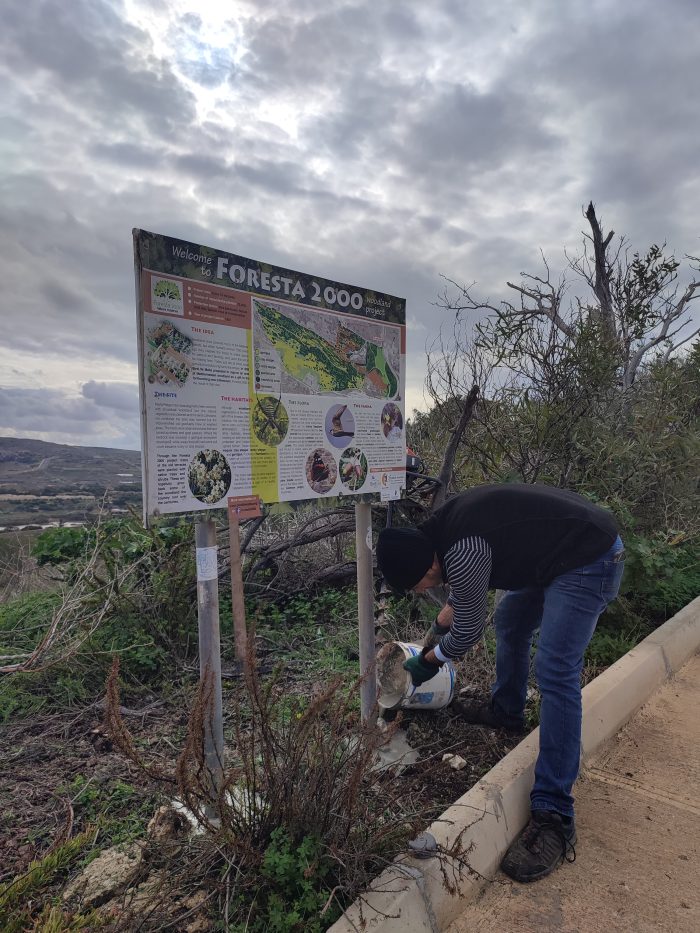

The end of the year brought us quite a few news on the policy front and good opportunities to participate in the decision-making process.
The protected cliffs of Ħal Far are facing another the threat
The Planning Authority had launched a public consultation about a partial review of the South Malta Local Plan (SMLP). This review mainly features a removal of a part of land in Ħal Far from within the Industrial Estate boundaries to declare it as a buffer zone around the Natura 2000 site (Rdumijiet ta’ Malta: Ir-Ramla taċ-Ċirkewwa sal-Ponta ta’ Bengħisa). Such a proposal would seem like a positive step, if only the Authority had not proposed to also allocate a “small portion” of the site for low-impact sports, which basically means the green light for the development of an airstrip for model aircrafts for which the agreement exists between the government and the Ħal Far Model Flying Association signed in 2022. Therefore, the current SMLP review process cannot be justified as it rather serves the interests of few. BirdLife Malta stand against such local plan review and call on the relevant authorities to instead create an official buffer zone free from intrusive activities. A protected status of the sensitive coastal area which is a home for our seabirds should be ensured. Additionally, BirdLife Malta advocate for the site in question to be duly repristinated. Find our objection to the plan here.
Call to protect Qawra White Wagtail roost before it’s too late
Last month, BirdLife Malta became aware of a proposal to build a new Regional Health Centre in the middle of Qawra (PA 4966/22, now at the stage of screening). Although being socially important, this project would involve uprooting a number of mature trees which provide shelter to protected avifauna species such as White Wagtails and Spanish Sparrows. Hence, BirdLife Malta engaged with the Planning Authority and the Environment and Resources Authority (ERA) to draw their attention to the environmental considerations of this development proposal, and called on the relevant parties to amend the plans at the early stage to preserve the important roost. Read our comments here.
No illegal trapping in Wied Għomor!
In December, BirdLife Malta also objected to the PA 6655/23 featuring a stone cladding around a trapping station and sanctioning of a reservoir and a trapping station in Wied Għomor. The grounds for our objection are that such development goes against the Rural Policy and Design Guidance and SPED, located ODZ and in a valley designated as an Area of Ecological Importance and a Site of Scientific Importance. Furthermore, the sole fact that the area is proposed to be used for trapping is against the law since the site is registered for finch research and not trapping. Read our objection here.

Little Gull observed at Salina!
Gulls are most probably one of the most overlooked group of birds, but when one takes a closer look, surprises surely won’t lack. Although most adult gulls have a predominantly white plumage, their dark markings vary a lot from one species to another. Apart from the variation in plumage, the size may also vary a lot from one gull species to another. Their feeding habits, preferred diet and favourite habitat, may also drastically differ.
The Little Gull (Gawwija Żgħira in Maltese) is the smallest gull we can enjoy, not just locally, with a very attractive plumage especially in immature birds, such as the one featured in these pictures. This particularly charming Little Gull visited our Salina Nature Reserve in December, where it spent a number of days feeding with the much commoner Black-headed and Mediterranean Gulls. Watching this gull in person surely helps appreciate more the discrepancy in size between this minute gull and a number of other gull species.
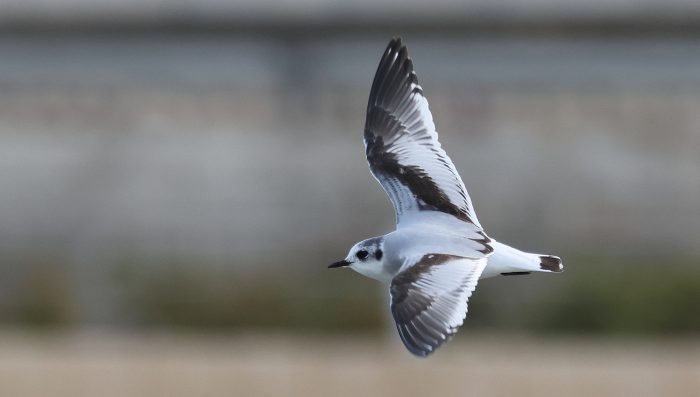

Little Gull at Salina
Mew Gull also spotted at Salina
The number of gulls spending time at BirdLife Malta Salina Nature Reserve increased as winter approached and the days started to get colder. Sometimes, among the most common species of gull, one can come across scarce or rare gulls. One of these is the Mew Gull, known in Maltese as Gawwija Sekonda. One such gull, aged as a second calendar year (2cy) made a short appearance at Salina in the first days of December 2023. It was observed resting among the other gulls in the saltpans for some time before it flew out to sea again.
The Mew Gull, or as it is sometimes known the Common Gull, is a small to medium sized gull with a breeding range from Atlantic Europe spreading eastward towards northern Asia. The breeding population of western European countries with mild winters are normally resident all year but these are joined in winter by migratory ones from the northern and eastern populations and sometimes numbers spread along to the south of the Mediterranean and ocassionally even Africa.
In Malta the status of the Mew Gull is regarded as a rare but annual visitor throughout the winter months with most records of single birds between late November and January. Watch a video of the Mew Gull at Salina here.
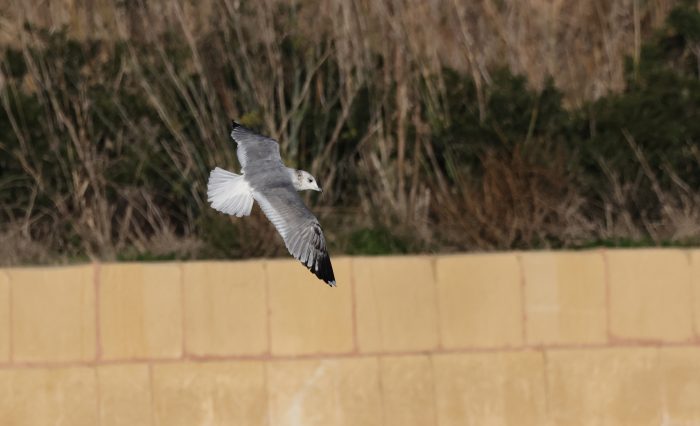

The Mew Gull seen at Salina in December
Dartford Warbler observed in Malta
If it were not for sharp eyes and attentive ears, the presence of these Dartford Warblers (Bufula tax-Xagħri) would have most likely gone unnoticed, mainly due to their small size and secretive habits. The vast majority of the local sightings of this rather scarce species occur in coastal garrigue, where it feeds on small insects in the low-lying vegetation characterising this particular habitat. Albeit such habitats might seem barren and poor in regards to biodiversity, the truth is a completely different story. It’s true that the presence of the flora and fauna found in such areas might not be obvious, but it does not mean that it is not present. When you are in what’s left of our open spaces, especially in garrigue, BirdLife Malta invite you to take a closer look at what lies just a few centimetres off the ground. We also encourage you to listen more carefully to the sounds around you in order to be able to fully appreciate your surrounding. Who knows, maybe you will manage to get a glimpse of a Dartford this winter!
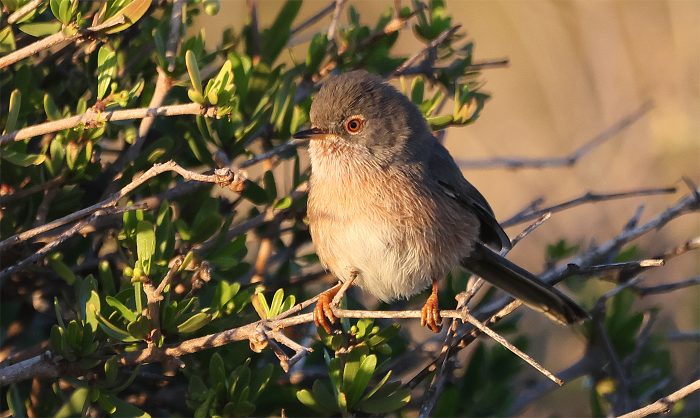

The Dartford Warblers giving more colour to the Maltese winter mornings
Credits
Words: Polina Venka, Charles Coleiro, David Attard, Pamela Jorgo, Nathaniel Attard, Vera Tokmakova, Manuel Mallia.
Photographs: BirdLife Malta, Aron Tanti, Mario V. Gauci, David Attard, Charles Coleiro, Vera Tokmakova, Manuel Mallia, Moviment Graffitti.
Footage: Birdlife Malta, Milena Berezina, Jody Fiteni, Nicholas Barbara, Mario V Gauci, Aron Tanti, Murat Gelir, Steve Zammit Lupi, editing by Murat Gelir, Nathaniel Attard.
Editing: Antoine Monnier and Nathaniel Attard.

